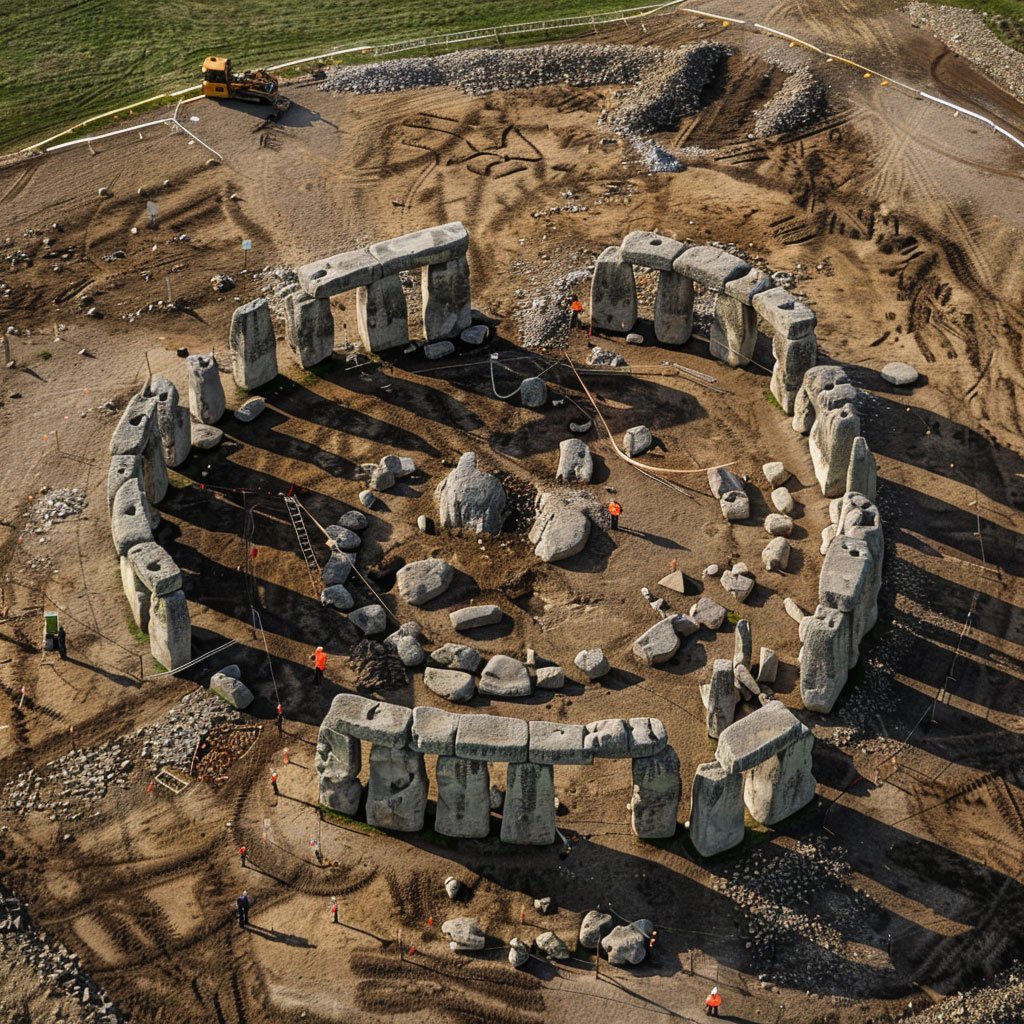
Introduction
Stonehenge, an enigmatic formation of towering stones set amidst the rolling hills of the English countryside, has intrigued humanity for over five millennia. This prehistoric monument, shrouded in mystery and rich in history, continues to captivate scholars, tourists, and mystics alike. In this exploration, we delve into the historical and cultural significance of Stonehenge, shedding light on its construction, pondering the various theories of its purpose, and providing valuable tips for those wishing to witness its timeless allure firsthand.
Historical Significance of Stonehenge
The origins of Stonehenge trace back to the Neolithic and Bronze Age, with construction phases spanning approximately 1500 years. This monumental labor resulted in the iconic stone circle that has stood the test of time, offering a silent testament to the ingenuity and determination of its creators. Stonehenge’s precise alignment with the solstices highlights its potential role as an astronomical or seasonal marker, embedding it with a deep cultural and historical significance that resonates with our fascination with the cosmos and the passage of time.

The Architectural Marvel of Ancient Engineering
The construction of Stonehenge is a marvel of prehistoric engineering. The monument’s larger sarsen stones, some standing up to 30 feet tall and weighing as much as 25 tons, were transported from nearby quarries, while the smaller bluestones were brought from as far as Wales, nearly 150 miles away. This remarkable feat required sophisticated planning, teamwork, and a profound understanding of the landscape. The precise arrangement of stones, designed to frame the rising and setting sun on the solstices, demonstrates the builders’ astronomical knowledge and their desire to integrate their creations with the natural world.

Exploring Theories Behind Stonehenge’s Purpose
The true purpose of Stonehenge remains one of the world’s most enduring mysteries. Over the centuries, it has been interpreted as a temple, a burial site, an astronomical calculator, or a place of healing. Some theories suggest it was a site for ancestor worship or a monument to unify the peoples of the late Neolithic period. The surrounding landscape, dotted with burial mounds and ceremonial pathways, offers clues to its significance as a focal point in a larger sacred geography. Modern archaeological methods continue to unveil new findings, adding layers of understanding to the complex narrative of Stonehenge’s past.

Cultural Impact and Modern Interpretations
The allure of Stonehenge extends beyond its archaeological significance, permeating popular culture and spiritual beliefs. It stands as an icon of mystery and ancient wisdom, inspiring everything from literature and music to modern pagan and druid ceremonies. The site’s mystique attracts a diverse array of visitors, from scholars and historians to those seeking spiritual connection. The enduring fascination with Stonehenge reflects our collective quest for meaning and our deep connection to the past.

Visiting Stonehenge: A Journey Through Time
For those planning to visit this ancient wonder, the experience can be nothing short of transformative. Here are some tips to make the most of your journey to Stonehenge:
- Plan Ahead: Booking your visit in advance is crucial, especially during peak seasons. Consider visiting at different times of the day to see how the changing light alters the mood and appearance of the stones.
- Explore Beyond the Stones: The landscape surrounding Stonehenge is rich with other Neolithic and Bronze Age sites, including Avebury, Woodhenge, and the Durrington Walls. Exploring these sites can provide a broader understanding of the area’s ancient significance.
- Engage with the Exhibitions: The Stonehenge Visitor Centre offers fascinating exhibitions and insights into the monument’s history and the people who built it. The interactive displays and artifacts from nearby archaeological digs deepen the visitor experience.
- Embrace the Mystery: While theories abound, much of Stonehenge’s story remains untold. Approaching the site with an open mind and imagination can enhance the sense of mystery and connection to the unknown.

Preserving the Legacy
As we continue to unravel the mysteries of Stonehenge, the importance of preserving this prehistoric site cannot be overstated. Efforts by historians, archaeologists, and conservationists ensure that Stonehenge remains a source of inspiration and wonder for future generations. Visitors play a crucial role in this preservation by respecting the site and its surroundings, ensuring that the legacy of this ancient monument endures.

Conclusion
The timeless allure of Stonehenge continues to captivate hearts and minds around the globe. Its towering stones stand as silent witnesses to the past, inviting us to ponder the lives, beliefs, and mysteries of those who walked the earth thousands of years ago. Stonehenge is more than just a monument; it is a bridge to the past, a symbol of the enduring human desire to understand our origins and our place in the cosmos. As we explore the historical and cultural significance of this ancient site, we are reminded of the shared heritage that binds us all.